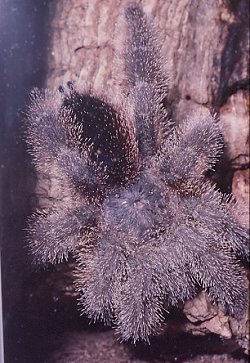This is a recent acquisition of mine...she is spectacular in person! She has been mated 4 times...then ate the male on the fourth  . So, hopefully we'll get an eggsac out of her.
. So, hopefully we'll get an eggsac out of her.
These are really REALLY nice looking and nice behaving Avics...get one if you can.
Chris
These are really REALLY nice looking and nice behaving Avics...get one if you can.
Chris






Comment